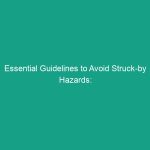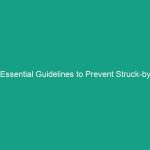Introduction
In today’s fast-paced industrial landscape, the health and Safety of employees are paramount. One of the most significant yet often overlooked aspects of Workplace Safety is the management of noise exposure. High noise levels can lead to irreversible hearing loss and other health complications, making it essential to implement effective noise exposure and hearing conservation strategies. Understanding the risks associated with noise exposure and following the necessary guidelines can help organizations protect their workforce, comply with Regulations, and foster a culture of Safety.
Regulatory Frameworks for Noise Exposure and Hearing Conservation
To effectively manage noise exposure and hearing conservation, it is crucial to understand the regulatory frameworks that govern these practices. Various organizations and agencies set guidelines and Standards to protect workers from harmful noise levels.
Occupational Safety and Health Administration (OSHA)
osha is the primary regulatory body in the United States responsible for ensuring safe and healthful working conditions. According to OSHA, the permissible noise exposure limit is 90 decibels (dB) for an 8-hour workday. Employers are required to implement a hearing conservation program when employees are exposed to noise levels at or above this threshold. This program must include monitoring noise levels, providing hearing protection, and conducting regular hearing tests.
National Institute for Occupational Safety and Health (NIOSH)
NIOSH provides recommendations that go beyond OSHA standards, advocating for a lower permissible exposure limit of 85 dB. NIOSH emphasizes a proactive approach to noise exposure and hearing conservation, encouraging employers to reduce noise at the source and incorporate engineering controls to minimize exposure levels. Their guidelines also recommend regular Training and education for employees about the risks associated with noise exposure and the importance of hearing conservation.
International Standards
Globally, organizations such as the International Organization for Standardization (ISO) have established standards for noise exposure and hearing conservation. ISO 9612 outlines methods for the measurement of noise exposure in the workplace and provides recommendations for evaluating risks associated with noise. Adhering to these international standards can help organizations maintain compliance and promote a safer work Environment.
Best Practices for Noise Exposure and Hearing Conservation
Implementing Best Practices in noise exposure and hearing conservation is essential for fostering a safe workplace. Here are several strategies that organizations can adopt to effectively manage noise levels and protect employee hearing.
Conduct Regular Noise Assessments
Regular noise assessments are critical in identifying areas where noise exposure may exceed permissible levels. These assessments should be performed by a qualified professional using calibrated sound level meters. By assessing noise levels throughout the workplace, employers can pinpoint high-noise areas and take appropriate measures to mitigate risks.
Implement Engineering Controls
Engineering controls are often the most effective way to reduce noise exposure. This may include soundproofing work areas, using noise barriers, or implementing quieter machinery. Employers should focus on addressing the source of the noise, which can significantly reduce exposure levels and create a safer work environment.
Provide Personal Protective Equipment (PPE)
When engineering controls cannot sufficiently reduce noise exposure, providing Personal Protective Equipment (PPE) becomes essential. Hearing protection devices (HPDs), such as earplugs and earmuffs, should be made available to all employees working in high-noise areas. Training employees on the correct use and Maintenance of these devices is crucial to ensure their effectiveness.
Establish a Hearing Conservation Program
A comprehensive hearing conservation program is vital for organizations with employees exposed to high noise levels. This program should include:
- Regular hearing tests to monitor employee hearing ability.
- Employee education on the risks of noise exposure and the importance of using hearing protection.
- Procedures for reporting and addressing noise-related concerns.
Foster a Culture of Safety
Creating a culture of safety within the organization encourages employees to prioritize their health and well-being. Employers should promote open communication about noise exposure and safety practices, allowing employees to voice concerns and share experiences. Regular training sessions and safety meetings can further reinforce the importance of noise exposure and hearing conservation.
Case Studies: Successful Implementation of Noise Reduction Strategies
Examining real-world examples of organizations that have successfully implemented noise reduction strategies can provide valuable insights into effective practices.
Case Study 1: Manufacturing Plant
A manufacturing plant faced challenges with high noise levels due to machinery operations. After conducting a thorough noise assessment, the management identified several high-noise sources. They implemented engineering controls by installing sound barriers and replacing older machinery with quieter models. Additionally, they introduced a hearing conservation program that included regular hearing tests and employee training. As a result, the plant reported a significant reduction in noise levels and improved employee morale.
Case Study 2: Construction Site
A construction company recognized the importance of noise exposure management on their worksites. They implemented a comprehensive hearing conservation program that included mandatory use of hearing protection and regular training sessions on the risks associated with high noise levels. The company also scheduled noisy activities during off-peak hours to minimize exposure. Feedback from employees indicated a greater awareness of noise-related risks and a commitment to using protective equipment, leading to fewer incidents of hearing loss.
Challenges in Noise Exposure and Hearing Conservation
Despite the availability of guidelines and Best Practices, organizations often face challenges in effectively managing noise exposure and hearing conservation. Understanding these challenges can help organizations develop more effective strategies.
Lack of Awareness
One of the primary challenges is the lack of awareness regarding the importance of noise exposure and hearing conservation. Many employees may not fully understand the risks associated with high noise levels or the significance of using hearing protection. Organizations must prioritize education and training to address this knowledge gap.
Financial Constraints
Implementing engineering controls and comprehensive hearing conservation programs can require significant financial investment. Smaller organizations, in particular, may struggle to allocate resources for these initiatives. However, the long-term Benefits of reducing noise exposure, such as decreased healthcare costs and improved productivity, often outweigh the initial expenses.
Resistance to Change
Employees may resist changes in workplace practices, particularly if they perceive them as inconvenient. Overcoming this resistance requires effective communication and engagement strategies. Involving employees in the development of noise reduction strategies can foster buy-in and encourage participation in safety initiatives.
Future Trends in Noise Exposure and Hearing Conservation
As industries evolve, so too do the approaches to managing noise exposure and hearing conservation. Staying informed about future trends can help organizations remain proactive in their safety practices.
Advancements in Technology
Technological advancements are providing new solutions for noise exposure management. Innovations such as noise-canceling technologies and smart hearing protection devices are becoming more prevalent, allowing for improved monitoring and management of noise levels. These technologies can enhance the effectiveness of hearing conservation strategies and provide real-time feedback to employees.
Increased Focus on Mental Health
The growing recognition of the connection between mental health and Workplace Safety is influencing noise management practices. Excessive noise can contribute to stress and anxiety, impacting overall employee well-being. Organizations are beginning to adopt a more holistic approach to safety, recognizing the importance of creating a work environment that promotes both physical and mental health.
Regulatory Changes
As awareness of noise exposure and its Effects continues to grow, regulatory frameworks may evolve to reflect new research and best practices. Organizations must stay informed about changes in regulations and adapt their practices accordingly to ensure compliance and protect their workforce.
Conclusion
Noise exposure and hearing conservation are critical components of Workplace Safety that require ongoing attention and action. By understanding the regulatory frameworks, implementing best practices, learning from case studies, and addressing challenges, organizations can create safer work environments for their employees. As industries continue to evolve, staying informed about future trends and advancements in noise management will be essential. We encourage organizations to prioritize noise exposure and hearing conservation, fostering a culture of safety that protects the health and well-being of their workforce. Remember, proactive measures today can lead to a healthier, more productive workplace tomorrow.


